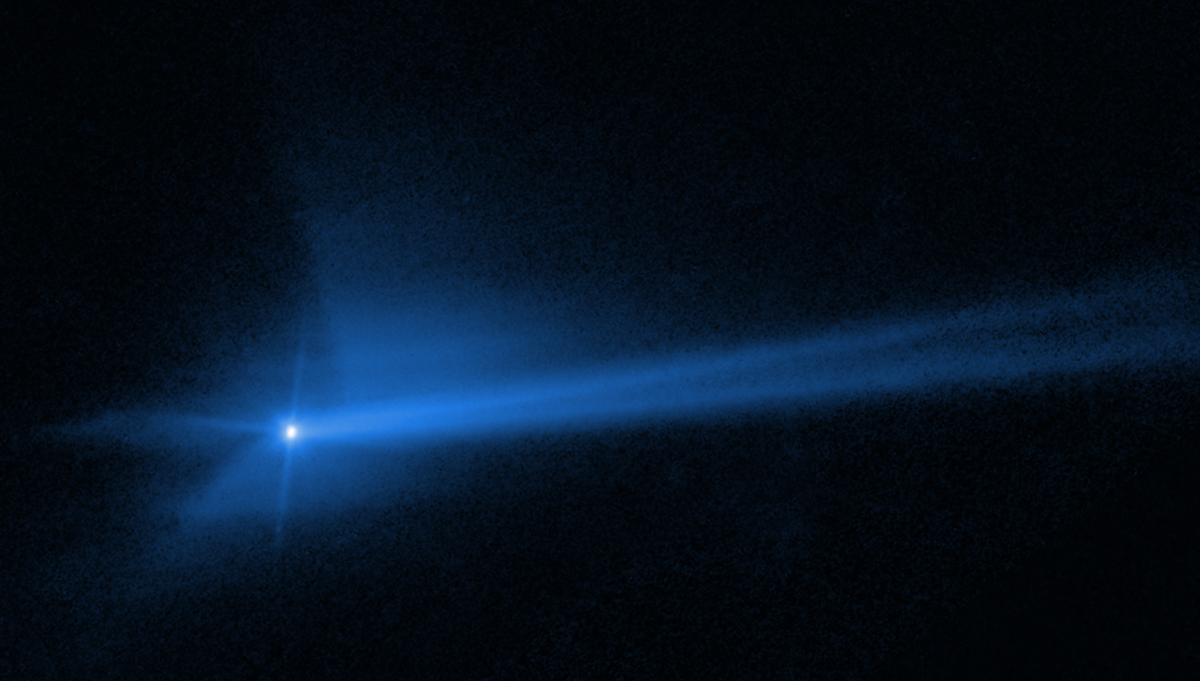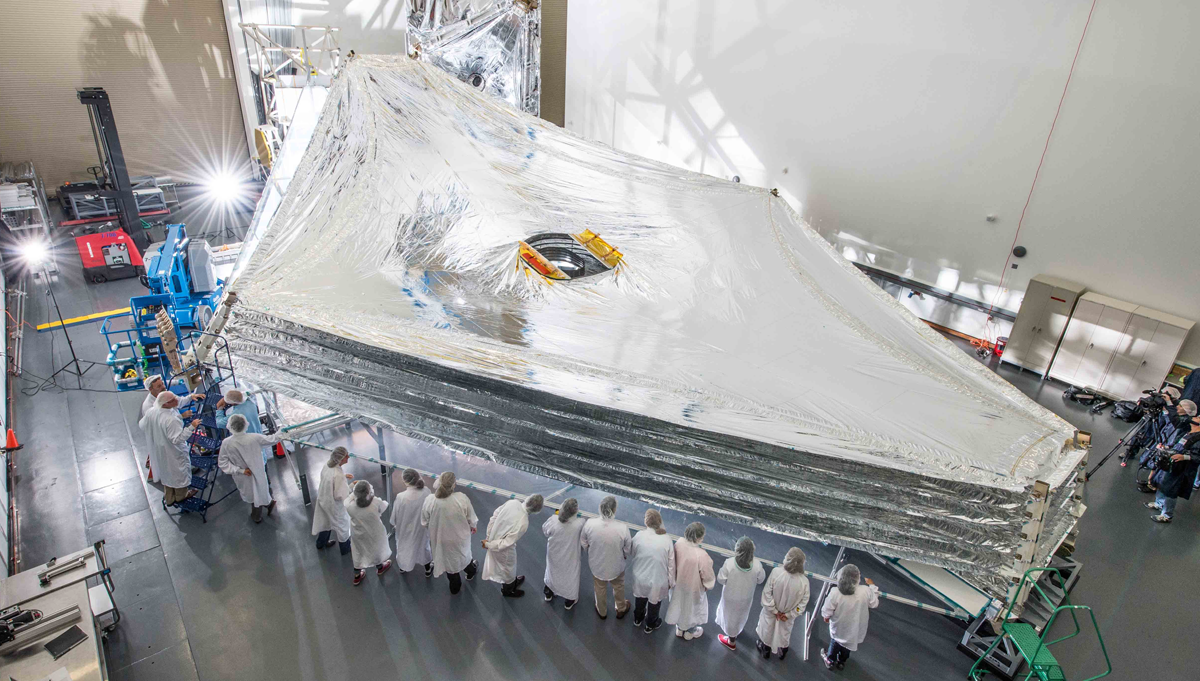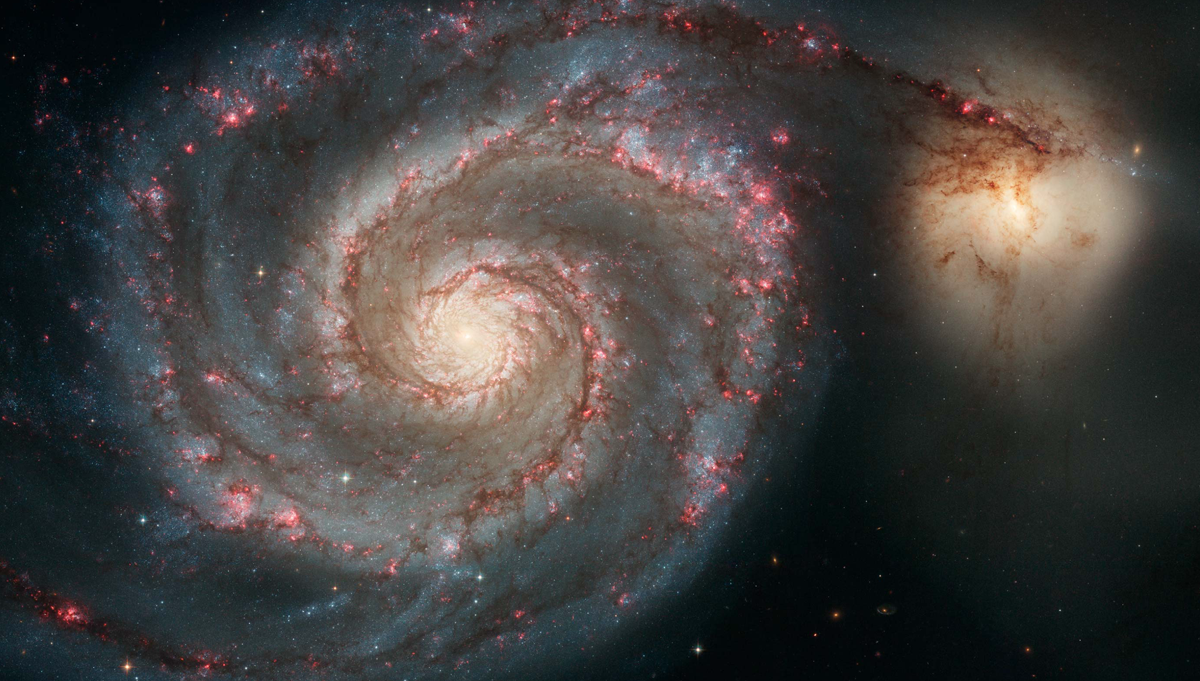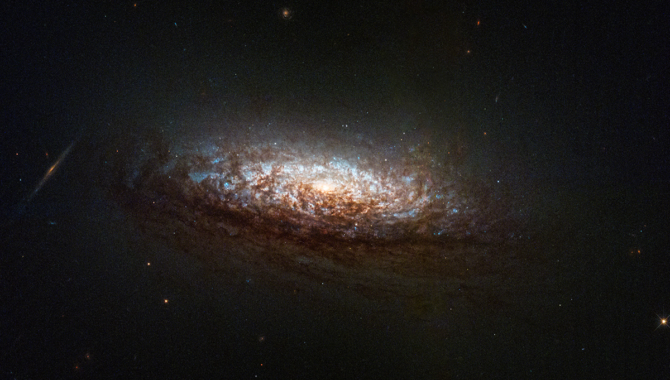
The first image taken this year with Hubble’s one-gyroscope pointing method is of NGC 1546, a nearby galaxy in the constellation Dorado. The galaxy’s orientation provides a good view of dust lanes from slightly above and backlit by the galaxy’s core. Credit: NASA, ESA, STScI, David Thilker (JHU)
Pointing method developed decades ago uses full complement of instruments to focus on targets with precision.
When NASA launched the Hubble Space Telescope in 1990, it included one of the most sophisticated guidance systems that had ever been built for a spacecraft. A system so precise it could lock on a tiny point of light from the early Universe that had traveled billions of years to reach Hubble’s lens.
This system has five components. The Coarse Sun Sensors use the Sun to help orient Hubble. The Magnetic Sensing System uses the Earth’s magnetic field to provide information about the telescope’s position. The Fixed Head Star Trackers use the brightness and location of key stars in Hubble’s field of view to discern its attitude. And the Fine Guidance Sensors use starlight to hold a desired attitude.

Astronauts John M. Grunsfeld (right) and Steven L. Smith share space on the end of the remote manipulator system (RMS) as they change out gyroscopes during the STS-103 mission in 1999. The gyroscopes are contained inside the rate sensor units (RSU) of the Hubble Space Telescope. Credit: NASA
Finally, Hubble launched with the most accurate gas gyroscopes that had ever been built, six high-accuracy, high-stability units installed in pairs, and operated three at a time, with three in reserve. These gyroscopes can quantify the most miniscule movements by the telescope—a small fraction of the width of a single human hair. They are crucial for pointing Hubble precisely at targets and holding its position as it produces the stunning images of the Universe that have become its trademark.
NASA sent Space Shuttle crews to Hubble five times to make repairs and updates between December 1993, when crews installed corrective optics that counteracted a flaw in Hubble’s primary mirror, and May 2009, when the shuttle program was winding down. Astronauts installed four new gyros in 1993 and replaced all six in 1999. During STS-125 in 2009, astronauts again replaced all six gyros.
“Of the six gyros that were installed in [the final] servicing mission, three of them were what we called Standard Flex Lead gyros. And three were what we called Enhanced Flex Lead gyros,” said Patrick Crouse, project manager, Hubble Space Telescope, speaking at a recent NASA press conference. “The enhancement was that they were able to sputter silver-plating on all those flex leads to prevent corrosion. Corrosion was a known failure mechanism for the Standard Flex Lead gyros.”
During sputtering, a metal target—in this case silver—is bombarded with high-energy ions in a vacuum chamber. This ejects atoms and molecules that condense onto a substrate to form an ultra-thin coating that is more than 99.9 percent pure metal. Sputtering produces coatings that are exceptionally thin, dense, and strongly adhered to a substrate.
“And in fact, the three gyros that have failed since servicing mission four have all been Standard Flex Lead gyros. And the Standard Flex Lead gyros that have failed typically have run, on average, about 42,000 hours. What we’ve seen so far with these Enhanced Flex Lead gyros is that the average of the three, they’ve ran over 101,000 hours through May,” Crouse said.
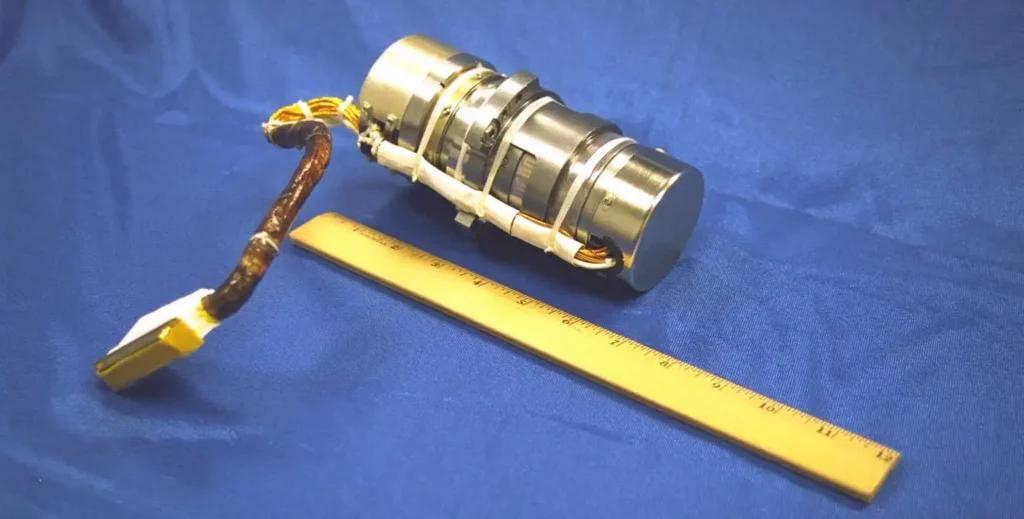
The Hubble Rate Gyro Assembly contains a gyroscope and all of its associated electronics. Credit: NASA
“By removing that corrosion-failure mechanism, our assessment has been that we could anticipate that these Enhanced Flex Lead gyros could operate on the order of five times longer than the standard gyros, based on a reliability assessment that we worked with the NASA Engineering and Safety Center,” he added.
Unfortunately, one of Hubble’s Enhanced Flex Lead gyros began returning faulty readings early this year. This led the team to suspend research operations multiple times, including on May 24, when Hubble was placed into safe mode.
“For months this particular gyro … has experienced repeated saturation events,” Crouse explained. “So, essentially the gyro outputs what it thinks is a maximum slew rate …, which is faulty. And that, in turn, causes us to go into safe hold. The team has repeatedly been able to take steps to return the gyro to normal readings. But the results have proved only to be temporary, and the problem reappears and has been reappearing more frequently.”
This isn’t the first time Hubble has been down to two properly functioning gyroscopes. In October 1999, the fourth of six gyroscopes failed weeks before shuttle mission STS-103, was scheduled to make repairs that included six new gyroscopes. Hubble orbited in safe mode until repairs were made.
“Hubble’s new image of a spectacular galaxy demonstrates the full success of our new, more stable pointing mode for the telescope.”
With Hubble returning spectacular science, the team went to work developing a contingency plan that would enable them to operate Hubble with two functional gyroscopes, compensating by using data from the other high-precision sensors. Later, a contingency plan was developed that enables the team to operate Hubble with a single gyroscope. Pointing the telescope this way is slower, but still incredibly accurate—within 20 milliarcseconds of a target center. NASA turned to this contingency plan earlier this month.
“Our team first developed a plan for one-gyro operations over 20 years ago, and it is the best mode to go forward to prolong Hubble’s life,” Crouse said. “There are some limitations in comparison to our normal three-gyro mode. It’ll take us more time to slew from one target attitude to the next and to be able to lock on to that science target. … In addition, we won’t have quite as much flexibility as to where we can observe on the sky at any one time. But, over the course of a year, we will have the full sky available to us to observe…”
Crouse noted there is a 70 percent likelihood that by using a single gyroscope, with another in reserve, Hubble’s operational life will extend through 2035. On June 18, NASA released the first photo from Hubble using the one gyroscope pointing mode, an image of galaxy NGC 1546.
“Hubble’s new image of a spectacular galaxy demonstrates the full success of our new, more stable pointing mode for the telescope,” said Dr. Jennifer Wiseman, senior project scientist for Hubble, in a NASA press release. “We’re poised now for many years of discovery ahead, and we’ll be looking at everything from our solar system to exoplanets to distant galaxies.”


